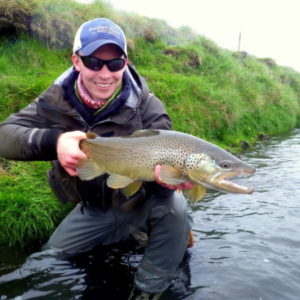We have already had a number of groups successfully travel to and from Cuba over the last six months, experience some fantastic flats fly fishing for bonefish, permit and tarpon. From 6th April 2022 travel has become even easier, with the removal of the pre-testing requirement and the need to show proof of vaccination on arrival (although we still recommend carry this just in case it is needed). This has made travel more appealing to a vast saltwater fly fishing destination with seemingly endless opportunities.
Travellers to Cuba are still currently required to complete the D’Viajeros online form within 72 hours of your arrival in Cuba.
Fly Fishing Destinations in Cuba
Cayo Romano, North Coast:
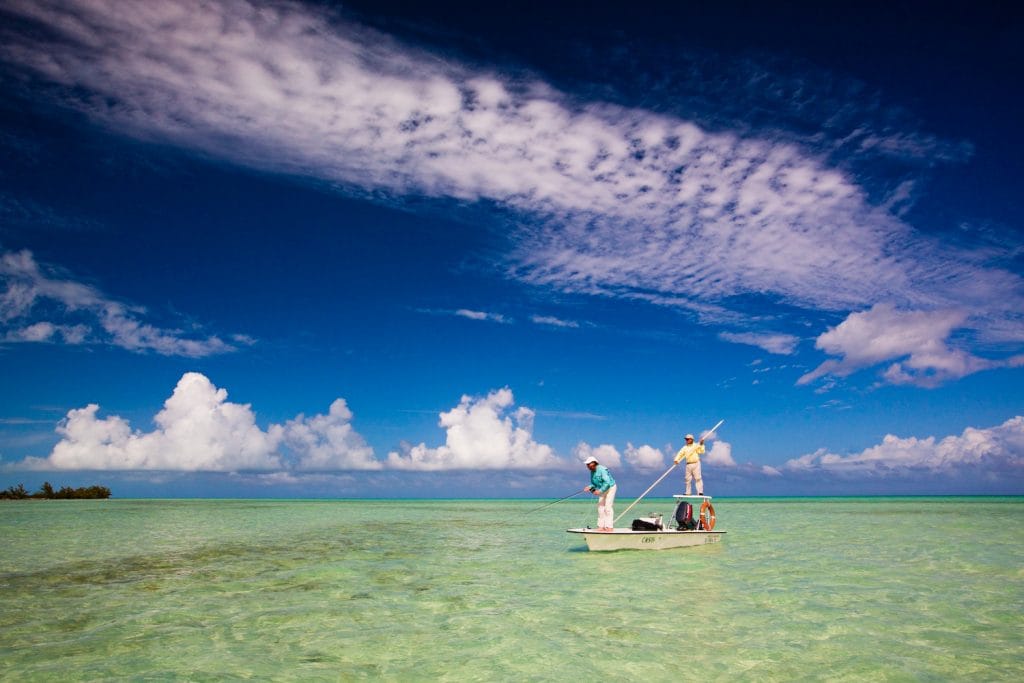
The flats at Cayo Romano/Cruz can be great and they are a hot spot for permit, bones with some tarpon. The guides there love fishing for permit for which it has quite a reputation. The open ocean is close to the flats so permit can comfortably move to deep water for rest and safety, but creep back to shallow water on the tide change. Often permit on the flats nearer the open ocean are in the company of rays making them more willing to eat the fly. There are also a lot back country areas that hold permit. The permit around Cayo Cruz are larger than average, most being in the 15-25 pound range.
The flats are an inviting combination of hard packed white sand and a semi-firm mottled bottom that still provides good wading. It’s very similar to Los Roques, Venezuela in terms of the amount of area that’s wadable and there are places here where you can wade for four hours straight without heading back to the boat. There are great opportunities for casting at tailing fish. In terms of time of year March through July is considered as high season and the prime is probably April – June as that is when some of the migratory tarpon show up as well.
The operation underwent a massive upgrade in 2019 when accommodation moved from a rather dingey Cuban hotel with long drives to the fishing to a brand new “Lodge” within a new hotel system. Whilst it is located on a large hotel complex it is like a separate apartment system that they use so it has its own pool, bar and lounge area which is only 100 metres from the dock. Rooms are all newly renovated, ensuite bathrooms, air conditioning and WIFI.
Santa Maria, North Coast:
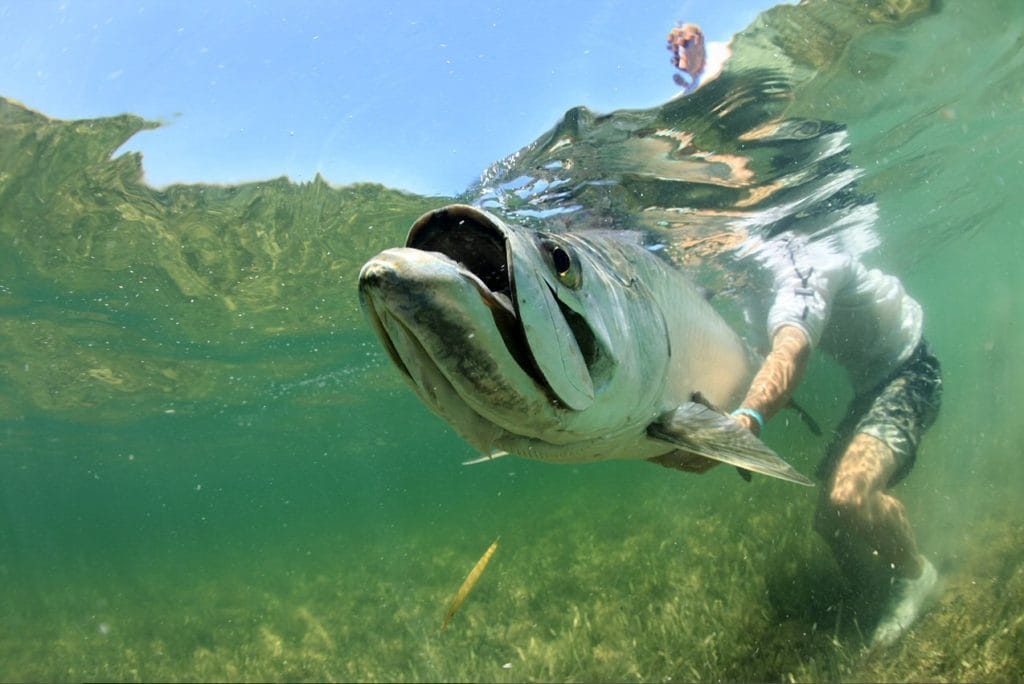
It is located on the north coast of Cuba at Jardines del Rey and UNESCO has declared this region a biosphere reserve. It is also referred to as Gardens of the King.
This stunning area of channels, mangroves and flats has world class tarpon fishing with fish from 10 lbs to 40 lbs present year round and migratory fish 80 lbs to 160 lbs showing up in great numbers from March onwards. Santa Maria is very much a tarpon fishery with other species available, but not the focus. For those looking to hunt the silver king then this is the spot you should focus on.
It is possible to target bonefish and permit, they are normally found on deeper flats which are fished for from the skiff rather than wading. Wading opportunities are very limited in this area.
Accommodation for fishermen is at the at the Iberostar Ensenachos resort which is very comfortable and perfect for non – fishers as well. The season runs from March to September with prime time April to July.
Jardines de la Reina, South Coast:
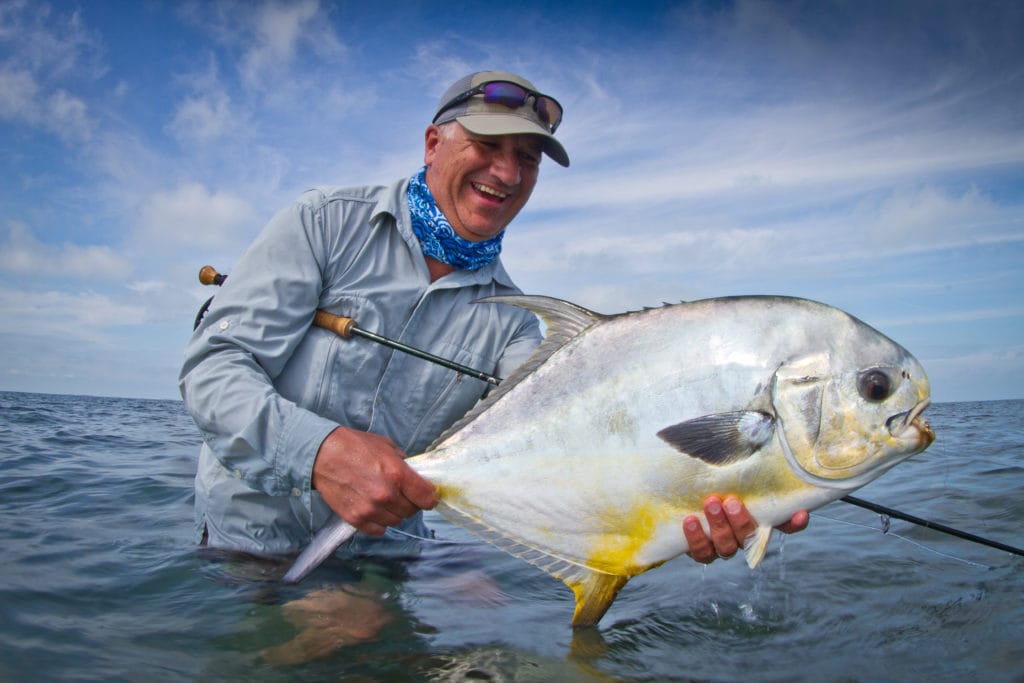
View Aardvark McLeod hosted week here.
Named the Queen’s Gardens by Christopher Columbus, the Jardines de la Reina is a pristine chain of islands that run more than one hundred miles along Cuba’s south-eastern coast. This vast marine park, bigger in size than the Florida Keys, is ideal for fly anglers who wish to live and experience fishing from dawn till dusk aboard a series of purpose built liveaboard vessels.
The average sized bonefish is perhaps a solid 3 to 5 lbs, but there are opportunities for fish in the 7 to 10 lbs class every day. The huge variety of species available here is an added bonus with everything from mutton snapper on the flats to wahoo and giant Cubera snapper on the drop offs.The flats environment here is a fantastic combination of wadable white sand and turtle grass flats that are accessed by skiff. Tarpon are prolific with many “baby” tarpon – fish in the 10 – 40 lbs class in the channels. On the flats the average size grows to 45-80 lbs with some specimens growing to 120-130 lbs in the deep ocean channel. Permit are also found in good numbers, and many of these fish will be in the 20 to 30 lbs class, with a few well over thirty. For anglers that land a permit, there is an excellent chance of completing a Grand Slam the same day. Tarpon can be found at just about any time and tide level as can bonefish. Over the years, there have been numerous Grand Slams caught by fly fishermen. Fishing hours are totally at the discretion of the clients, unlike many other lodges. The fishing day normally begins with breakfast at 0700 and departing for fishing from 0745 onward. Lunch can be taken back at the mothership or on the skiff and is at the angler’s discretion. One of the main joys of fishing here is the sunset hour. Often it is calm, and schools of tailing and laid up bones can be seen hundreds of yards away, their golden tails glistening in the light of the falling sun. This is the time that most operations are heading back to the lodge so this magical witching hour is missed.
While you are in Jardines de la Reina, accommodations are provided aboard a series of purpose-built liveaboard vessels. There are seven boats in all; Jardines Avalon 1, 2, 3 & 4, Jardine Avalon F1 & F2, and Perola. Each of the boat offers a unique and comfortable experience.
Isla de la Juventud (Isle of Youth), South Coast:
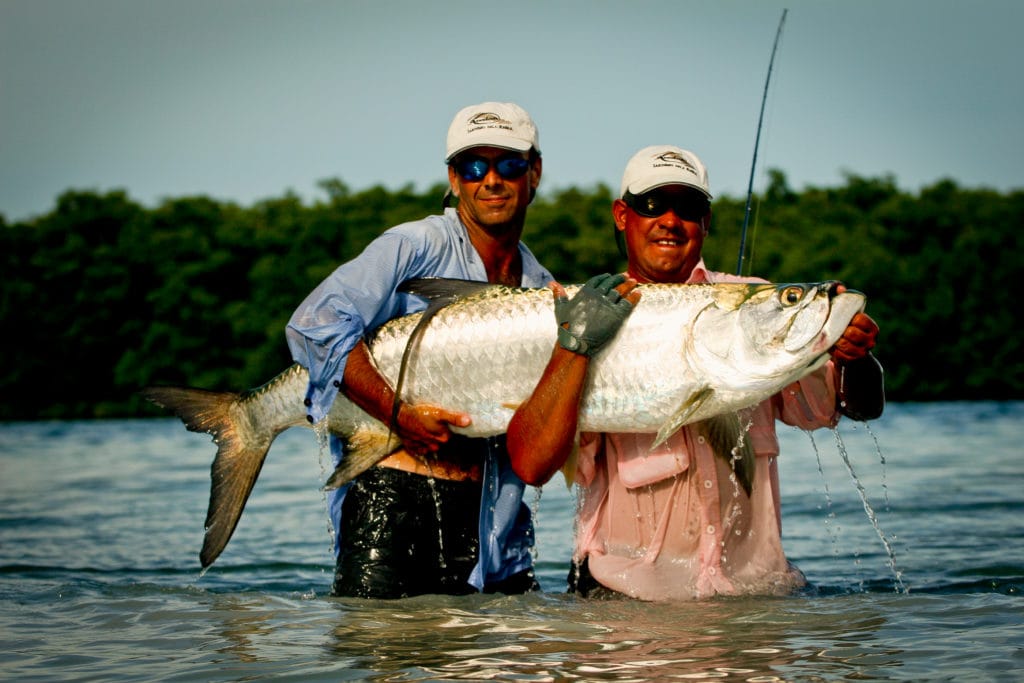
Isla de la Juventud, or the Isle of the Youth, in Cuba is the country’s second largest island and famed for fly fishing for giant tarpon. Sitting to the south of the mainland of Cuba it is a year-round fishery and focus on the huge chain of keys and islands that lead eastward. A wonderful array of pristine saltwater flats and deeper channels, a perfect place for tarpon of all sizes, big bonefish and good numbers of permit too.
The focus for most fly anglers heading to Isla de la Juventud is the year-round world-class tarpon fishing. The best tarpon fishing is often found in the spring and summer months but the fish are resident and can be caught in all months. They are often found in the deeper channels that run like a highway network between the flats, but fish of 30-80 lbs can regularly be sight cast to on the shallow flats. Stretching eastward, the large area of marine park provides a pristine environment similar to that of Jardines de la Reina with a combination of marl, sand, and turtle grass providing a perfect environment for fly fishing from a skiff. Aside from the numerous tarpon, these flats are also home to big bonefish and good numbers of permit too.
While you are in Isla de la Juventud, accommodations are provided aboard Jardines Avalon F1. The boat offers a unique and comfortable experience.
Cayo Largo, South Coast:
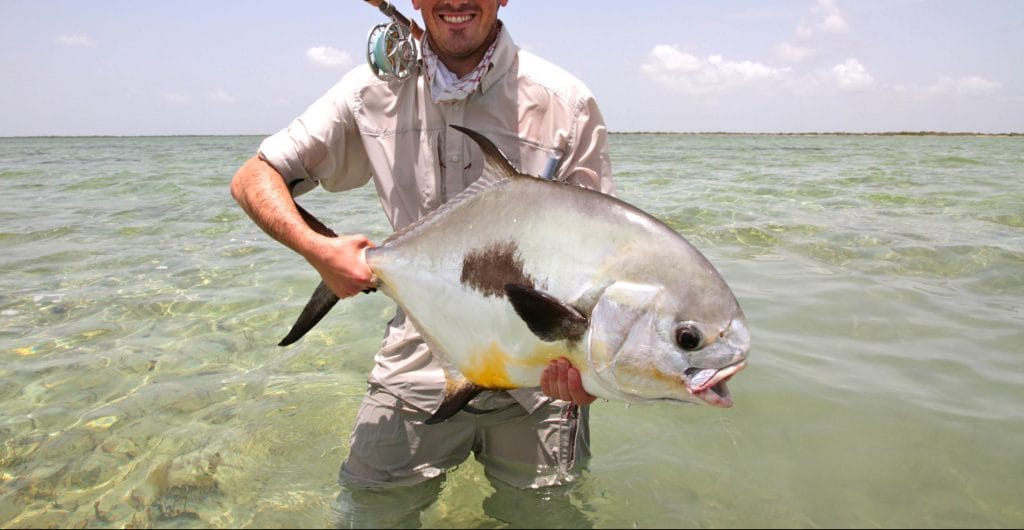
View last minute Special Offer here.
On the south west coast in the Canarreos archipelago, cayo Largo offers consistently good fishing with the highest number of grand slams anywhere in the Caribbean. Aside from the excellent bonefish and permit available There are tarpon ever present found primarily in the mangroves or reef ranging from 15 lbs to 30 lbs. Traditionally the migratory tarpon arrive from April to August and tarpon over 100 lbs have been landed. Winding through the flats and cays are deeper channels that provide perfect areas for tarpon to feed on the bountiful shoals of sardines but when the tides are right they move onto the flats providing great sport. It’s a wonderful mixed species fishery with longstanding experienced guides.
While you are at Cayo Largo, accommodations are provided aboard Jardines Avalon 1. The boat offers a unique and comfortable experience.
Zapata, South Coast:
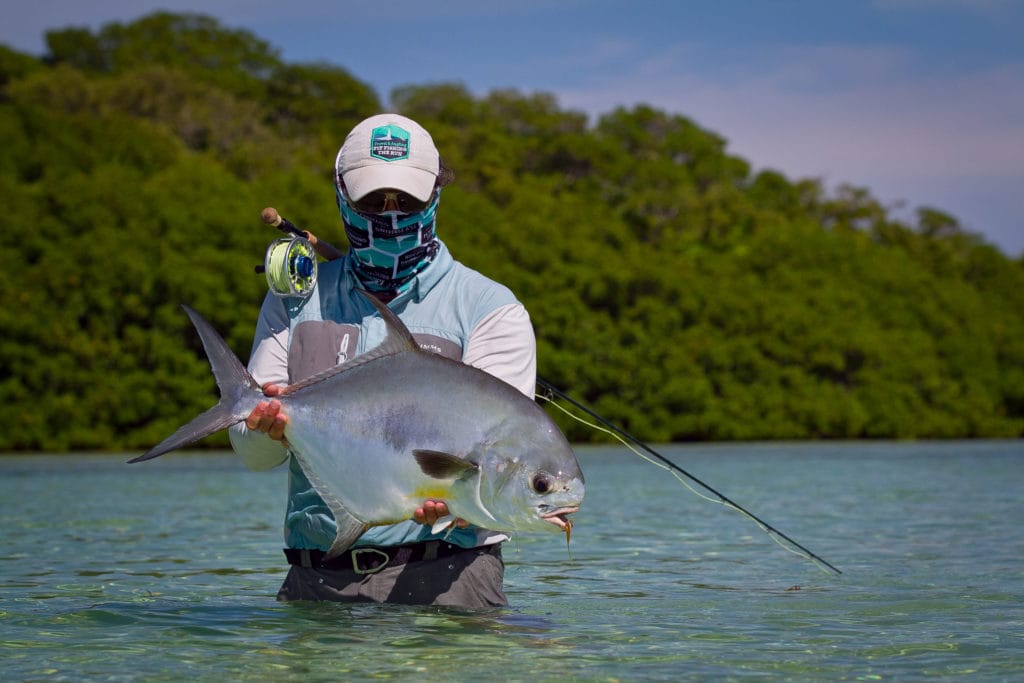
Whilst the Zapata operation is for those who are happy to make some sacrifices to creature comforts it certainly makes no sacrifices to the quality of fishing on offer. This destination has been relatively unexplored due to a restriction on the use of boat engines in the area but now with a new set of skiffs the true potential of this southern Cuba area can be explored. It is a mixed species fishery and the fishable area includes large expanses of flats interspersed with lagoons and channels; perfect habitat for bonefish and permit. In addition the outer ocean fronted ring of islands and mangrove forests raise the potential for opportunities of not just large bonefish but also permit, snook and tarpon. The operation is based from the mothership Georgiana and during your week you will have three days on a single skiff included.
Cayo Paredon, North Coast
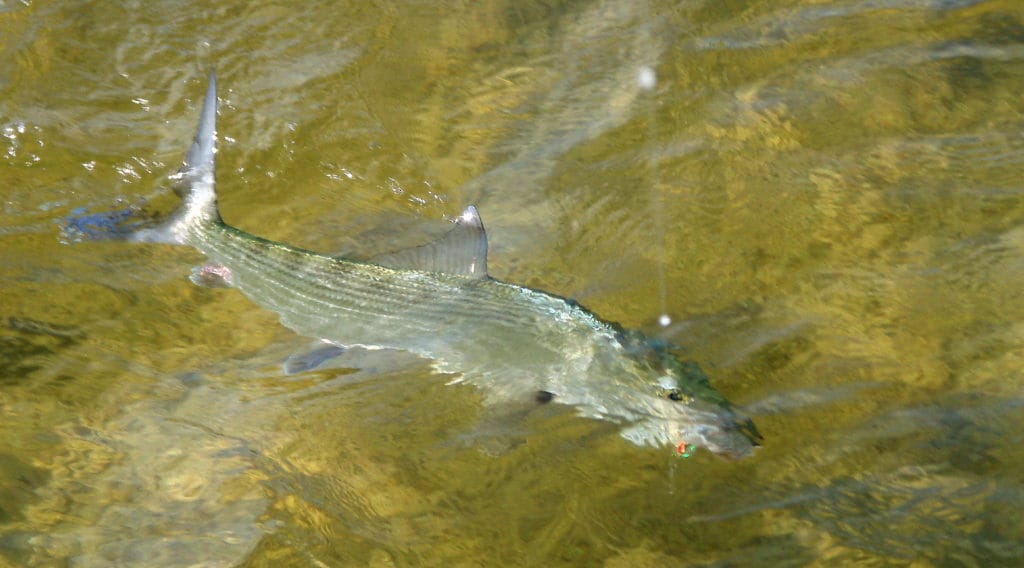
Paredón is a new land based destination on the north coast of Cuba located in the province of Camaguey. Camagüey is the easternmost, most significant and flattest province in the centre of Cuba. It has a few mountains and is flanked by the two most extensive archipelagos in the country.
Paredón is a tiny island of only 8.7 km2 located in the middle of the Gardens of the King Archipelago. The Jardines del Rey (Gardens of the King) Archipelago lies just off the northern coast of northern Cuba. Some of its cays are larger than some countries of the world, and its intact nature stands out, making it one of the most precious spots in the Cuban Caribbean. To the north, it’s surrounded by a coral wall of about 248 miles in length, the second largest barrier reef in the world, the first being the Great Barrier Reef in Australia.
Paredón is well known for fly fishing, being on many anglers radar for decades. Since Paredón is inside the Jardines del Rey Marine Park, like all our operations in Cuba, it will be under Marine Park Management with the help of Blue Sanctuary Organisation. Hard bottomed flats bordering deep blue channels allow for great wading opportunities for bonefish, permit and tarpon, among other species. The bonefish are numerous and large. There is also a good population of permit that cruise the same flats but in the deeper water.
Anglers will be based at the newly built Swandor Resort with all Inclusive services.
If you would like more information please contact Peter McLeod or Alex Jardine, alternatively you call our office on +44 1980 847389.

